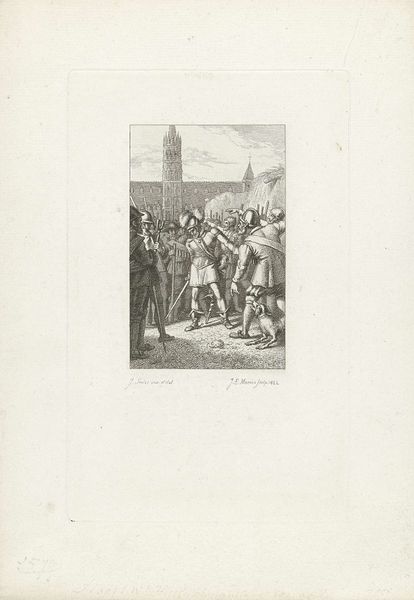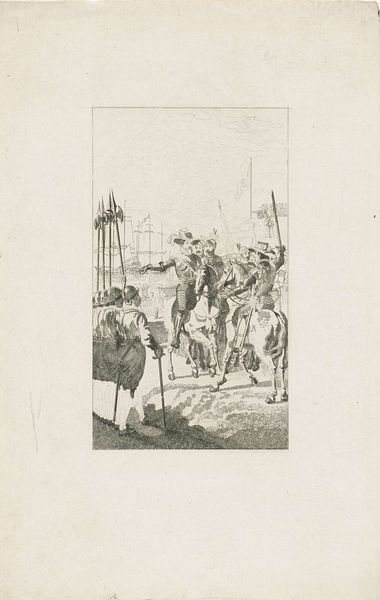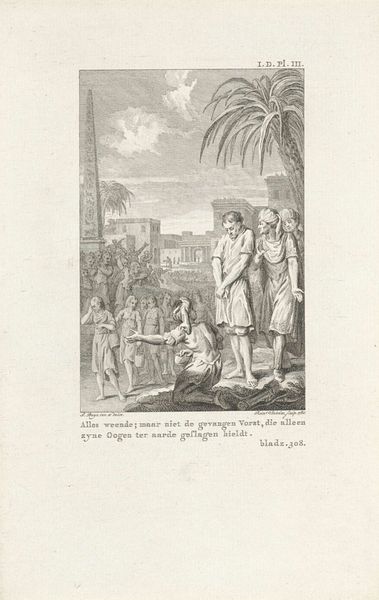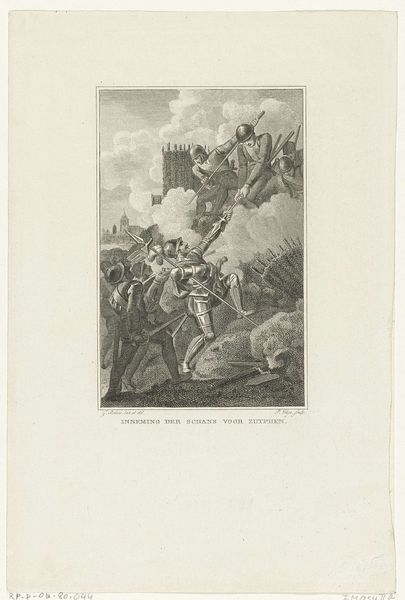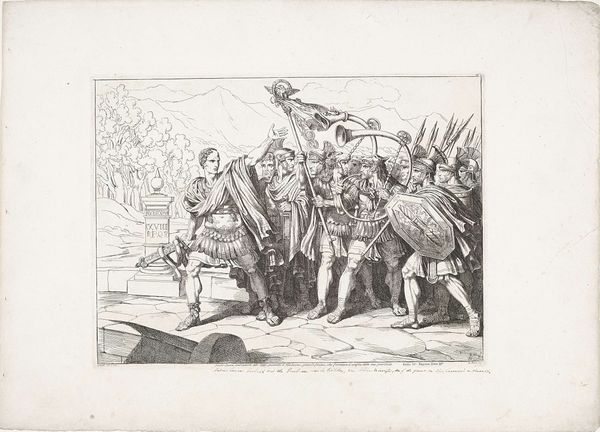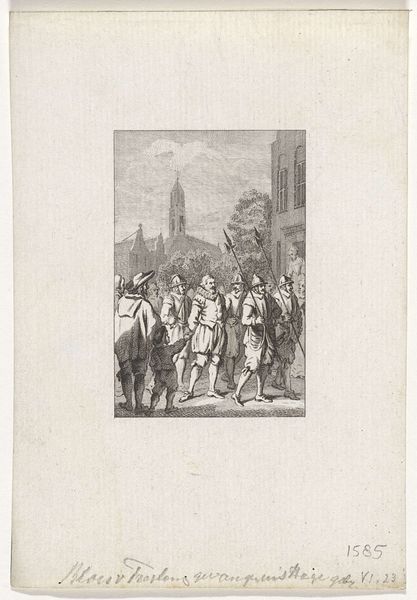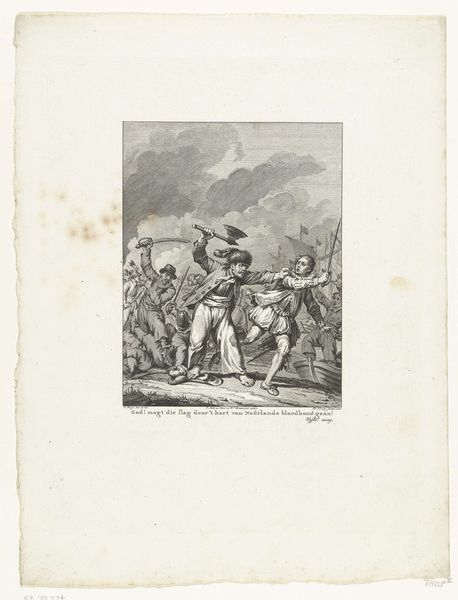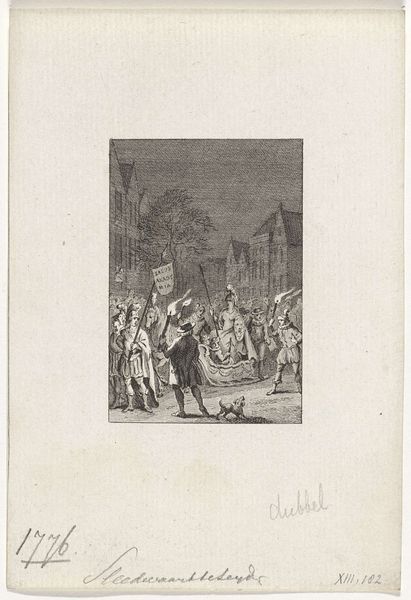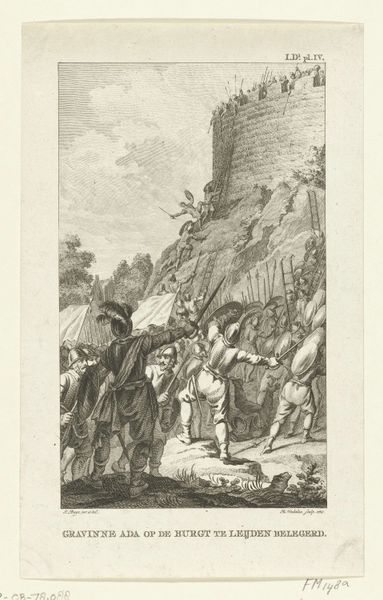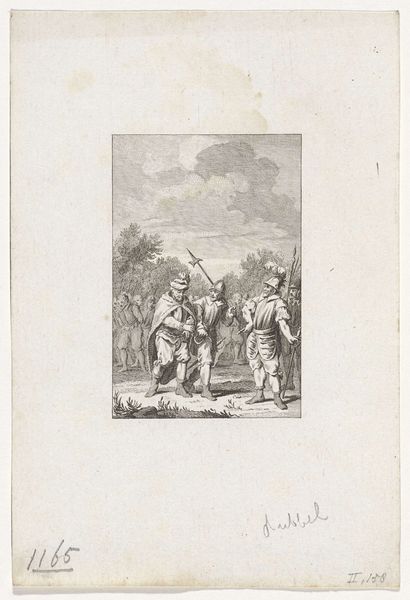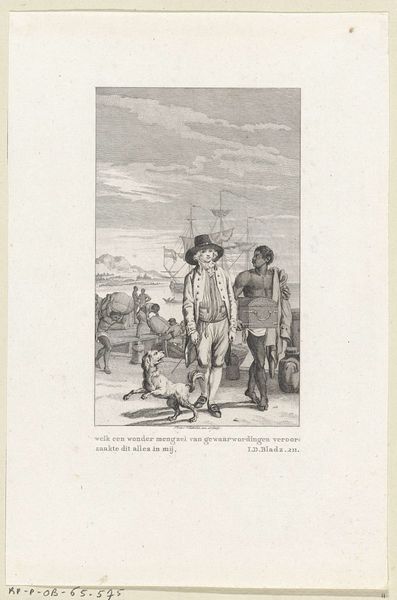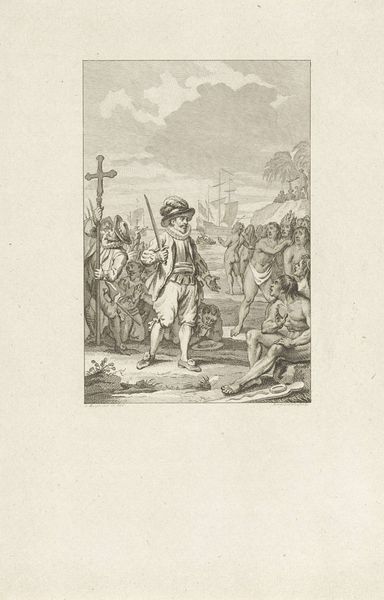
Dimensions: height 248 mm, width 152 mm
Copyright: Rijks Museum: Open Domain
Curator: Right, let's delve into this etching titled "Heldendaad van Pieter van den Broecke, 1620," dating from 1823-1829. The artist is Philippus Velijn, and the work is currently housed here at the Rijksmuseum. It illustrates a rather dramatic historical scene. Editor: It has that "old engraving" aesthetic. The high contrast gives it a timeless, almost mythical feeling. You're immediately drawn to the figure pointing. It's compelling, isn’t it? Curator: Indeed. The artwork portrays Pieter van den Broecke in what's considered an act of heroism. He is the focal point, chained, yet boldly pointing towards something. A symbol of resistance or defiance? Editor: More likely a navigation, a path laid for others. But heroism, what a problematic concept. Looking at this image through the lens of colonialism, what narratives are really being valorized here? The composition centers a white, male figure, seemingly unconcerned with the context of oppression within the context of 17th century. Curator: Precisely. The landscape with that distant flag—suggests a foreign land, adventure, conquest. The artist invites us to celebrate this "heroic act", but from whose perspective? Editor: The depiction is clearly from a European gaze. But even if this work celebrates bravery, shouldn't we pause and unpack these colonial stories that often obscure so much brutality? The power dynamic on display is almost impossible to overlook in this illustration of dominance. Curator: Absolutely. The historical context forces us to confront this troubling duality. The clean lines and classical composition aesthetics often mask the messy realities of colonial history. The beauty and intricacy draw you in, only to reveal the complicated questions. Editor: Yes, a stark reminder that even seemingly straightforward historical artworks carry layers of complexity. Reflecting, reconsidering, reinterpreting—that’s how we keep these stories alive. Curator: And hopefully, learn from them. These historical prints invite not just admiration but critical thought. Editor: Agreed. It is in engaging with the complexity where we see real opportunities for learning and change.
Comments
No comments
Be the first to comment and join the conversation on the ultimate creative platform.
